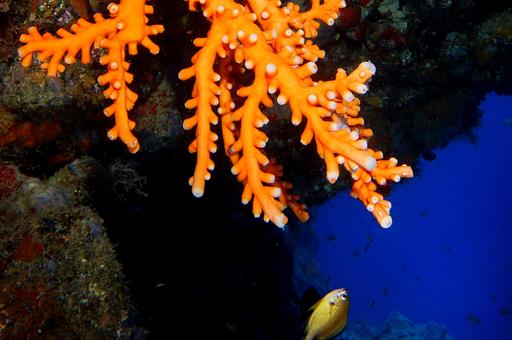Another step for the protection of our seas
Ministry of Agriculture, Food and Environmental Affairs proposes designation of Lanzarote-Fuerteventura marine space as Site of Community Importance (SCI)
News - 2015.3.4
The proposal made by the ministerial department provides information on the geographical boundaries, surface area and on the values under which this marine space is being proposed, and includes a preventive protection regime until such time as this space is designated by the European Commission as an SCI.
With this SCI proposal for the eastern and southern Lanzarote-Fuerteventura marine space, Spain will increase the marine surface area of the Natura 2000 Network by more than 14,000 km2 and increase the amount of Spanish seas classified as protected areas to 8%. Spain is therefore approaching the target set by the Convention on Biological Diversity to protect 10% of marine zones by 2020.
Numerous natural assets are also protected, including habitats governed by Directive 92/43/EEC of the Council, of 21 May 1992, on the conservation of natural habitats and of wild fauna and flora, such as reefs and sand banks permanently covered by shallow sea water, and endangered species, such as the loggerhead sea turtle (Caretta caretta) and a wide range of cetaceous species, such as the common bottlenose dolphin (Tursiops truncatus), sperm whales, beaked whales and finback whales, among others.
Extensive and detailed study of the zones
This proposal to include the Lanzarote-Fuerteventura marine space in the Natura 2000 Network follows an exhaustive study of the zone within the framework of the Project LIFE+ INDEMARES "Inventory and designation of marine Natura 2000 areas in the Spanish sea", coordinated by the Biodiversity Foundation and in which the Ministry of Agriculture, Food and Environmental Affairs is a partner together with the Spanish Institute of Oceanography, the National Scientific Research Council, ALNITAK, the Coordinator for the Study of Marine Mammals, OCEANA, the Society for the Study of Cetaceans in the Canary Island Archipelago, SEO/Birdlife and WWF Spain.
Alongside the scientific endeavours, which began in 2009 with the oceanographic campaigns, the INDEMARES project has included a participatory process prior to the approval of these regulations, in which information was produced and opinions were gathered from all the sectors and administration services involved.
When this zone was selected in 2009 to form part of the INDEMARES project, it was entitled "Southern Fuerteventura" and was mainly set up to study the habitat of community interest 1170 "Reefs" on the "Banquete" and "Amanay" underwater banks, as well as pelagic sea turtle species and cetaceans. A preliminary study by the body responsible in this zone of the study on cetaceans (SECAC) determined the presence of cetaceans in a wider area to the east of the islands of Lanzarote and Fuerteventura, meaning the European Commission was notified in 2011 that the study was to be expanded and its name changed to the "Eastern and southern Lanzarote-Fuerteventura marine space".
Hence, the seabed habitats of "El Banquete" and "Amanay" located to the south of the island of Fuerteventura, as well as the cetacean populations in the wider area that includes both southern Fuerteventura and eastern Fuerteventura and Lanzarote have been studied.
The SCI proposal process began with a participatory workshop at which the studies performed and the SCI proposal were presented to all stakeholder sectors on 27 and 28 June 2014 in Puerto del Rosario. During the workshop, scientific information was provided to justify the expansion of the SCI proposal to include certain adjacent zones (to the north of Lanzarote and the Bocaina Strait).
The Lanzarote and Fuerteventura SCI proposal has been subject to public participation and the criteria of the Advisory Council on Environmental Affairs, the State Commission for Natural Heritage and Biodiversity, and the ministerial departments.
Major commitment to developing the Natura 2000 Network
The proposal of this new space as an SCI is a milestone for the conservation of biodiversity in Spain, especially for the development and expansion of the Natura 2000 Network in the marine environment, where the number of spaces and the protected surface area is far less than in the terrestrial environment.
This proposal joins those for another nine SCIs and the declaration of 39 Special Bird Protection Areas (SBPA) approved in 2014, which are the result of a major effort by this ministerial department to meet the obligations stemming from international agreements, EU regulations and its own legal system, and demonstrates its firm commitment to protecting the marine environment.
Future endeavours
The Ministry of Agriculture, Food and Environmental Affairs will continue the work begun with the INDEMARES project in order to reach the protection target of 10% of marine surface area by 2020. Plans are in place to study other zones for declaration as Marine Protected Areas, for the protection of species and habitats beyond the scope of those included in the Natura 2000 Network, such as the cetacean populations.





